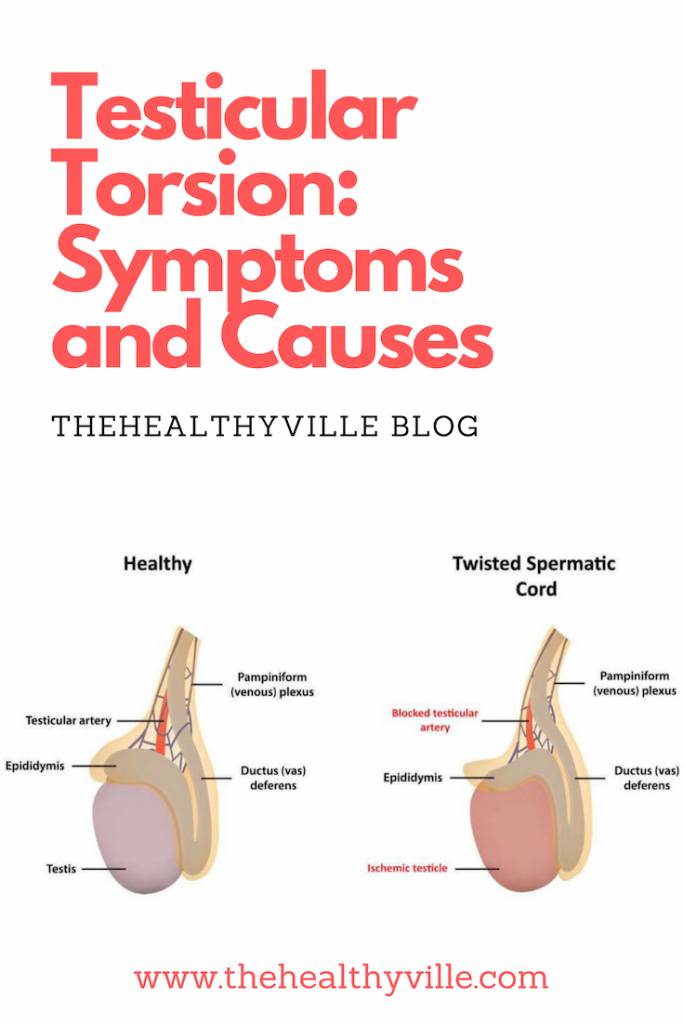Testicular torsion is a condition that affects many men. It is the torsion of the spermatic cord which holds the testicles in the scrotum. Find out why!
Testicular torsion is the torsion of the spermatic cord, which holds the testicles in the scrotum. When this occurs, there is interruption of the blood supply to the testicle and surrounding tissues. The testicles are the glands that produce sperm. They are ovoid and are located in the scrotal bag.
The blood supply to the testes comes from the spermatic arteries that arrive through the spermatic cord. On the other hand, venous drainage takes place through spermatic veins that follow the same path, but in the opposite direction.
When the testicular torsion occurs, there is an obstruction of the blood vessels, which results in a lack of irrigation in the testicle that, if prolonged, can cause the loss of it.
Causes of torsion of the spermatic cord
Certain anatomical forms can favor a greater predisposition to suffer torsion of the spermatic cord.
Testicular torsion can occur at any age, it can even occur in older men. However, it is more frequent during puberty or during the neonatal period.
Some men are more prone to torsion of the spermatic cord due to defects in the connective tissue of the scrotum. Although there is not always a clear cause.
This condition can appear after suffering an injury in the scrotum area that produces a lot of inflammation. Although it can also happen after performing a heavy exercise.
In some cases, there is an anatomical predisposition in which the fixation of the testicle is incomplete or does not exist. It can also be because the spermatic cord is longer than normal.
What are the symptoms?
Pain is the main symptom, of sudden appearance and of great intensity. The pain is localized in the affected testicle, although it can radiate to the groin area. It can even reach the lower abdomen. Other symptoms that may accompany the pain are:
- Sickness.
- Vomiting.
- General discomfort.
There are cases in which it can be seen that the testicle is ascended and horizontal in the scrotal sac. Generally, the affected testicle is inflamed, with reddening and hardening of the skin of the scrotum.
The intensity of these symptoms depends on the time of evolution. However, in some cases, the torsion of the spermatic cord resolves spontaneously and the pain disappears little by little.
Diagnosis of testicular torsion
Doctors can make the diagnosis of torsion of the testicular cord through the clinical history and physical examination of the patient. Ultrasound is the imaging test that confirms the diagnosis, but it is not always necessary to perform it.
Ultrasound will show that the blood flow to the testicle is lower with respect to the healthy testicle. Doctors perform this diagnostic test in patients who have a clinical or doubtful examination.
Treatment
Surgery is the usual form of treatment, in order to resolve the torsion and fix the cord.
It is a surgical emergency and time is of vital importance. This is because the more time passes, the greater the risk of necrosis and loss of the testicle. If it takes place within the first 6 hours, most of the testicles can be saved.
When a child complains of testicular pain that appears abruptly, it is advisable to consult the doctor immediately. The treatment consists of undoing the torsion and subsequent fixation of the affected testicle.
Further info: Hypospadias – Many Boys Suffer From This Condition Without Telling Their Parents! BEWARE!
In some cases, when there is not much inflammation and surgery is not going to be immediate, you can undo the rotation manually, but always proceeding to surgery later.
If you detect the condition early and treat it immediately, the testicle can continue to function properly. The odds that it will be necessary to remove the testicle will increase if the blood flow is reduced for more than 6 hours. However, sometimes, you may lose your ability to function.
Don’t forget to SHARE the causes and symptoms of testicular torsion with your friends and family on your social networks!

